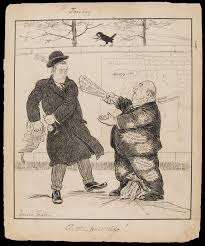Presented by Paystrubmakr.com  By John Wolf and Tom Collen CPA
By John Wolf and Tom Collen CPA
Business Interest Limited
Business interest generally is allowed as a deduction in the taxable year in which the interest is paid or accrued, subject to a number of limitations. For example,
limitations on interest expense exist for certain amounts paid in connection with
insurance and annuity contracts, while other disallowances exist with respect to
interest payments between related taxpayers. Other limitations on the deductibility of interest expense, in general, exist to disallow certain amounts of interest paid in connection with tax-exempt interest, passive interest, investment interest, and qualified residence interest.
For 2018 and later, in the case of any taxpayer for any taxable year, the deduction for business interest is limited to the sum of:
(1) business interest income;
(2) 30%t of the adjusted taxable income of the taxpayer for the taxable year;
and
(3) the floor plan financing interest of the taxpayer for the taxable year.
Definitions: Business interest means any interest paid or accrued on indebtedness properly allocable to a trade or business. Business interest income
means the amount of interest included in the gross income of the taxpayer
for the taxable year which is properly allocable to a trade or business. Adjust-
ed taxable income is a business’s taxable income computed without regard to
business interest expense, business interest income, net operating losses, and
depreciation, amortization, and depletion.
Floor plan financing interest means interest paid or accrued on floor plan financing indebtedness. Floor plan financing indebtedness means indebtedness used to finance the acquisition of motor vehicles held for sale to retail customers and secured by the inventory so acquired. The amount of any business interest not allowed as a deduction for any taxable year may be carried forward indefinitely, treating business interest as allowed as a deduction on a first-in, first-out basis.

Note: A small businesses with average gross receipts of $25 million or less
(adjusted for inflation) is exempt from this interest deduction limitation. In
addition, the limitation does not apply to any real property development, redevelopment, construction, reconstruction, acquisition, conversion, rental,
operation, management, leasing, or brokerage trade or business. Farming businesses are allowed to elect out of the limitation.
The limitation generally applies at the taxpayer level. However, in the case of
any partnership, the limitation is applied at the partnership level.
Limitation on Non-corporate Losses
When a taxpayer can take deductions and credits is generally determined by:
(1) their method of accounting (§461),
(2) the passive activity rules (§469), and
Note: Losses and expenses attributable to passive activities may only be de-
ducted from the income attributable to such activities. Excess losses and expenses are suspended and can only be deducted against other income upon a fully taxable disposition.
(3) the net operating loss provisions (§172).
Note: A net operating loss (the excess of allowable deductions over gross in-
come) can be carried over to other tax for years.
From 2018 through 2025, excess business losses of a taxpayer (other than a corporation) are not allowed for the taxable year. Such losses are carried forward and treated as part of the taxpayer’s net operating loss (“NOL”) carryforward in subsequent taxable years. NOL carryovers generally are allowed for a taxable year up to the lesser of the carryover amount or 80% of taxable income determined without regard to the deduction for NOLs.
An excess business loss is the excess of aggregate deductions of the taxpayer attributable to trades or businesses of the taxpayer (determined without regard to the limitation of the provision), over the sum of aggregate gross income or gain
of the taxpayer plus $250,000 (indexed for inflation).
In the case of a partnership or S corporation, the provision applies at the partner
or shareholder level.
The provision applies after the application of the passive loss rules.

Net Operating Loss Deduction Modified – §172
A net operating loss (NOL) generally is the amount by which a taxpayer’s cur-
rent-year business deductions exceed its current-year gross income. NOLs may not be deducted in the year generated but may be carried back two years and carried forward 20 years to offset taxable income in such years (§172). The alter-
native minimum tax (AMT) rules provide that a taxpayer’s NOL deduction may not reduce the taxpayer’s alternative minimum taxable income by more than
90%. 26 U.S. Code § 172.Net operating loss deduction U.S. Code Notes
Different rules apply with respect to NOLs arising in certain circumstances. A
special five-year carryback applies to NOLs arising from a farming loss, losses arising from certain bad debts of commercial banks, and certain amounts related to disaster relief. Special rules also apply to specified liability losses (ten-year
carryback) and excess interest losses (no carryback to any year preceding a corporate equity reduction transaction). Additionally, a special rule applied to losses incurred in 2008 and 2009 (up to a five-year carryback) and a special rule applied to certain electric utility companies with respect to NOLs arising in 2003
through 2005 (five-year carryback).
For 2018 and later, NOLs are generally not allowed to be carried back (i.e., the
2-year carryback period and the longer carryback periods for special types of losses, are eliminated), but may only be carried forward indefinitely. Exceptions are provided for farming and insurance companies. Farming losses may be carried back 2 years (down from 5) and non-life insurance companies retain 2-year carryback and 20-year carryforward periods.
However, for 2018 and later, taxpayers can only deduct an NOL carryover or
carryback (in the case of farms and insurance companies) to the extent of 80% of
the taxpayer’s taxable income (determined without regard to the NOL deduction).
Expenses for Child Care Facilities & Services – §45F
Employers, who provide certain child care assistance to their employees, are al-
lowed an income tax credit. The annual amount of the credit is the sum of:
(1) 25% of the qualified child care expenditures, and
(2) 10% of the qualified child care resource and referral expenditures
The maximum amount of credit allowable is $150,000 (§45F).
Qualified childcare expenses include costs paid or incurred:
(1) to acquire, construct, rehabilitate or expand property that is to be used as
part of the taxpayer’s qualified child care facility;
(2) for the operation of the taxpayer’s qualified child care facility, including
the costs of training and certain compensation for employees of the child
care facility, and scholarship programs; or
(3) under a contract with a qualified child care facility to provide child care
services to employees of the taxpayer.
ATRA permanently extended §45F for taxable years beginning after December
31, 2012. 26 U.S. Code § 45F.Employer-provided child care credit

Family & Medical Leave Credit – §45S
For 2018 and 2019, eligible employers may claim a general business credit equal
to 12.5% of the number of wages paid to qualify employees during any period
in which such employees are on family and medical leave (not to exceed 12
weeks for any year) if the rate of payment under the program is 50% of the wag-
es normally paid to an employee (§45S). However, the credit is increased by 0.25
percentage points (but not above 25%) for each percentage point by which The rate of payment exceeds 50%. Section 45S Employer Credit for Paid Family and Medical Leave FAQs

Note: Prior tax law did not provide a credit to employers for compensation
paid to employees while on leave.
An eligible employer is one who has in place a written policy that allows all qualifying full-time employees not less than two weeks of annual paid family and
medical leave, and who allows all less-than-full-time qualifying employees a
commensurate amount of leave on a pro-rata basis.
A qualifying employee is any employee who has been employed by the employer
for one year or more, and who for the preceding year, had compensation, not in
excess of 60% of the compensation threshold for highly compensated employees.
Uniformed Services Wage Credit – §45P
In general, compensation paid by an employer to an employee is deductible by
the employer unless the expense must be capitalized (§162). In the case of an employee who is called to active duty with respect to the armed forces of the United States, some employers voluntarily pay the employee the difference between the compensation that the employer would have paid to the employee during the period of military service less the amount of pay received by the employee from the military. This payment by the employer is often referred to as
“differential pay.”
Note: Differential pay means any payment that: (1) is made by an employer to
an individual with respect to any period during which the individual is per-
forming service in the uniformed services of the United States while on active duty for a period of more than 30 days, and (2) represents all or a portion of the wages that the individual would have received from the employer
if the individual was performing services for the employer.
The employer is allowed to take a credit against its income tax liability for a tax-
able year in an amount equal to 20% of the sum of the eligible differential wage
payments for each of the employer’s qualified employees for the taxable year
(§45P).

This provision was scheduled to expire for taxable years beginning after Decem-
ber 31, 2014. However, the PATH Act reinstated the differential wage payment credit and made it permanent. The PATH Act also permanently modified the
58credit by making it available to an employer of any size, rather than only to eligible small business employers.
Note: Prior to the PATH Act, to be eligible for the §45P credit, an employer
had to qualify as an eligible small business employer. An eligible small business employer meant, with respect to a taxable year, an employer that: (1)
employed on average less than 50 employees on business days during the
taxable year; and (2) under a written plan of the taxpayer, provided eligible
differential wage payments to every qualified employee.
Health Care Coverage
Because of the 2010 health care legislation, employers are required to report and
small businesses are allowed a tax credit for providing such coverage.
Credit – §45R
The 2010 Health Care Act grants a tax credit to qualified small employers that provide health care coverage (§45R). The credit is claimed on form
8941.
The maximum credit is 35% of the employer’s premium expenses. However,
for tax-exempt employers, the maximum credit is 25% of the employer’s’
premium expenses.
Note: The employer’s deduction for health insurance premiums is reduced
by this credit.
To qualify, a small employer (for-profit or tax-exempt) must have fewer than
25 full-time equivalent (FTE) employees for the tax year, the average annual
wages of its employees for the year must be less than $50,000 per FTE, and
the employer must pay the premiums under a qualifying arrangement. If the
number of FTEs exceeds 10 or average annual wages exceed $26,600 in 2018
(up from $26,200 in 2017), the amount of the credit is reduced using a formula
(R.P. 2018-18).

Reporting – §6051(a)(14)
Since 2012 (for W-2s for 2012 and later years), W-2s must report the value of
an employee’s health insurance coverage sponsored by the employer. Cover-
age essentially means any group health plan made available to the employee
by the employer (regardless of whether the employer or employee pays for
the coverage) that is excludable from the employee’s gross income under
§106 (Notice 2012-9). All employers providing applicable employer-
sponsored coverage is subject to this reporting requirement. However,
there was transition relief until January 2014 for small businesses that have fewer than 250 W-2s.
paystumbmakr.com team thanks you for a visit and reading this blog Pays tub online About pay stubs
Learn how to create your pay stub
paystubmakr.com
Disclaimer: John Wolf and paystubmakr.com are making a total effort to offer accurate, competent, ethical HR management, employer, and workplace advice. We do not use the words of an attorney, and the content on the site is not given as legal advice. The website has readers from all US states, which all have different laws on these topics. The reader should look for legal advice before taking any action. The information presented on this website is offered as a general guide only.

